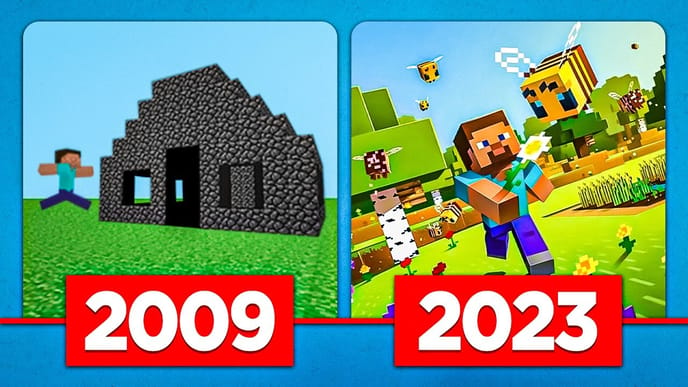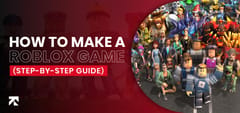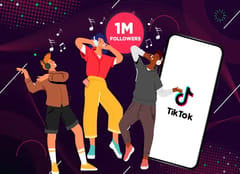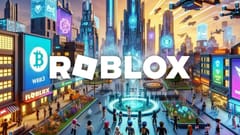
The Journey of Minecraft: How It Evolved Over the Years
Posted by Lily Morgan October 4th, 2023
In the vast landscape of gaming, few titles have left an indelible mark like Minecraft. From its humble beginnings to becoming a global phenomenon, the journey of Minecraft is a tale of innovation, community, and the enduring appeal of creativity in gaming.
1. The Birth of a Blocky World: Alpha and Beta Days
Minecraft's story begins in 2009 when Swedish developer Markus Persson, also known as "Notch," released the alpha version of Minecraft to the public. This early iteration, characterized by a blocky aesthetic and a focus on exploration and survival, laid the groundwork for what would become a gaming giant.
During the alpha and beta phases, players witnessed the gradual introduction of core gameplay elements—mining, crafting, and building—that would come to define the Minecraft experience. The simplicity of the block-based world captivated players, inviting them to unleash their creativity in ways few games had before.
2. Official Release: Stepping into the Blocky Realm
Minecraft transitioned from beta to official release on November 18, 2011. This marked a pivotal moment for the game, signaling its readiness to captivate a broader audience. With the official release, Minecraft introduced the Ender Dragon, providing players with an ultimate goal and a formidable adversary to conquer.
The release also saw the inclusion of the game's iconic Creative mode, allowing players to build without the constraints of resources or survival threats. This addition further expanded the possibilities for creative expression, attracting a diverse player base ranging from casual builders to ambitious architects.
3. Expanding Horizons: Minecraft Across Platforms
Minecraft's initial success on PC laid the foundation for expansion across various platforms. The game made its debut on consoles, starting with the Xbox 360 edition in 2012. This move brought Minecraft to a wider audience and showcased the game's adaptability to different gaming environments.
The game's availability on consoles was a game-changer, allowing players to experience the blocky world from the comfort of their living rooms. The success of the console editions paved the way for Minecraft to spread its influence to mobile devices, further cementing its status as a cross-platform phenomenon.
4. Cultural Impact: Minecraft Goes Mainstream
As Minecraft continued to evolve, it transcended the gaming community to become a cultural phenomenon. The simplicity of its mechanics, coupled with the endless possibilities of creative expression, attracted players of all ages. The introduction of the game's iconic pixelated aesthetic and the cheerful soundtrack added to its charm, making Minecraft a cultural touchstone.
By 2013, Minecraft had become a mainstream sensation. Its distinct visual style inspired merchandise, animations, and a plethora of user-generated content. The game's influence extended to popular culture, with references appearing in television shows, movies, and even in classrooms where educators leveraged its creative potential for educational purposes.
5. Microsoft's Acquisition: A New Chapter Begins
In 2014, Microsoft made headlines with the acquisition of Mojang, the studio behind Minecraft, for a staggering $2.5 billion. This move sparked speculation and some concerns within the Minecraft community about the game's future. However, Microsoft's commitment to preserving the essence of Minecraft as an open and creative platform reassured fans.
Under Microsoft's ownership, Minecraft continued to receive updates and enhancements. The acquisition facilitated the game's availability on the Windows 10 platform and laid the groundwork for further innovations, including the introduction of cross-platform play, allowing players on different devices to join each other's worlds.
6. The Minecraft Renaissance: Updates and Expansions
Minecraft's post-acquisition era ushered in what can be described as a "Minecraft Renaissance." The game received a series of major updates that introduced new features, biomes, mobs, and gameplay mechanics. The introduction of the "Better Together Update" in 2017 marked a significant milestone by unifying the game across multiple platforms, enabling players to collaborate seamlessly.
Subsequent updates, including the "Village & Pillage" and "Nether Update," revitalized exploration and survival aspects of the game. These expansions not only added depth to the gameplay but also demonstrated Mojang's commitment to keeping Minecraft fresh and engaging for both new and seasoned players.
7. Educational Edition: Minecraft in the Classroom
Recognizing the educational potential of Minecraft, Mojang introduced Minecraft: Education Edition in 2016. This specialized version of the game was designed to facilitate learning in classrooms, allowing educators to leverage the game's creative and collaborative aspects for a wide range of subjects.
Minecraft: Education Edition became a valuable tool for fostering creativity, problem-solving, and teamwork among students. Its success in educational settings showcased Minecraft's versatility beyond entertainment and underscored its ability to inspire and engage learners of all ages.
8. Dungeons and Beyond: Minecraft Expands Its Universe
Minecraft's expansion didn't stop with the main game; it extended to new genres and experiences. Minecraft Dungeons, released in 2020, offered a fresh perspective with its action-adventure gameplay. This spin-off title retained the blocky aesthetic while introducing a dungeon-crawling experience that resonated with both Minecraft enthusiasts and newcomers.
Beyond Dungeons, Minecraft's universe continued to expand with initiatives like Minecraft Earth, an augmented reality game that brought the blocky world into the real world. These endeavors showcased Mojang's commitment to exploring new frontiers while staying true to the core principles that made Minecraft a beloved phenomenon.
9. Legacy and Longevity: A Game for the Ages
As of my last knowledge update in September 2021, Minecraft stands as one of the best-selling video games of all time, with over 200 million copies sold across various platforms. Its enduring popularity can be attributed to its timeless appeal, the creativity it unleashes, and the unwavering support from a dedicated community.
Minecraft's legacy goes beyond its commercial success; it's a testament to the transformative power of games. The community's constant contributions through mods, custom maps, and creative builds have turned Minecraft into a living, evolving entity that continues to capture the hearts of players across generations.
10. The Future of Minecraft: What Lies Ahead
As we gaze into the future of Minecraft, one can't help but wonder what lies ahead for this blocky universe. With ongoing updates, community-driven content, and the potential for new innovations, Minecraft's journey is far from over. The game's ability to adapt, evolve, and inspire ensures that it will remain a cornerstone of the gaming world for years to come.
In conclusion, the journey of Minecraft is a captivating narrative of growth, adaptation, and cultural impact. From its alpha days to becoming a global phenomenon, Minecraft has not only shaped the gaming landscape but has also become a canvas for endless creativity and exploration. As players continue to shape and reshape its blocky world, Minecraft stands as a timeless testament to the power of play and the boundless possibilities within a game limited only by the imagination.





